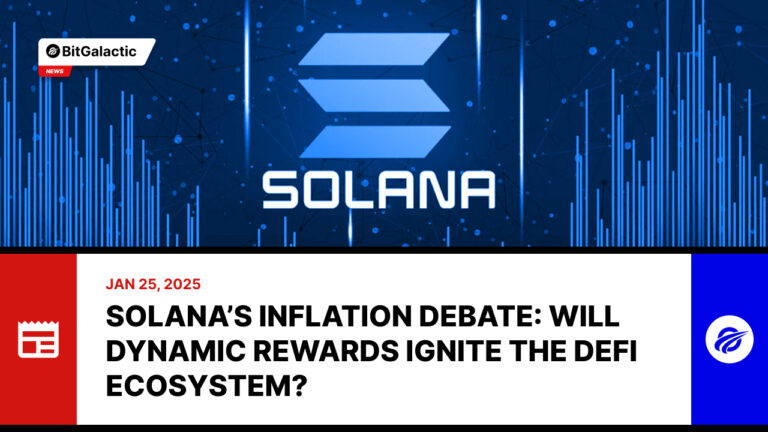Solana’s Inflation Debate: Will Dynamic Rewards Ignite the DeFi Ecosystem?
Solana is at the center of an intriguing debate as a bold proposal emerges to slash inflation rates for its native token, SOL. This idea, spearheaded by partners at Multicoin Capital, aims to dynamically adjust the inflation rate to attract more activity within the blockchain’s decentralized finance (DeFi) ecosystem, potentially reshaping Solana’s trajectory. Let’s unpack the proposal and its implications through BitGalactic’s lens.
What’s the Proposal All About?
Currently, Solana’s inflation rate is set to decline by 15% annually until it stabilizes at 1.5%. However, the new proposal suggests moving away from a fixed rate to a dynamic model that targets a 50% staking rate of SOL tokens. This would incentivize DeFi participation while reducing unnecessary staking incentives.
Cindy Leow, co-founder of Drift, a perpetual futures exchange on Solana, explained that dynamic staking rewards would elevate SOL’s attractiveness as collateral in DeFi. “This would enhance liquidity and encourage staking into productive use cases rather than simply locking tokens with validators,” she shared with DL News.
However, some analysts warn that the stakes are high. BitGalactic notes that a dynamic system could introduce uncertainty for investors who rely on predictable yields, raising questions about the long-term stability of SOL’s tokenomics.
Why Adjust the Inflation Rate?
The proposal’s authors argue that the current inflation setup, with an annualized rate of 3.8%, has led to two primary issues:
- Downward Price Pressure: Continuously minting new SOL tokens creates “long-term downward price pressure,” echoing concerns previously raised by Solana company Helius.
- Missed DeFi Opportunities: With 69% of SOL tokens already staked, there’s little incentive for investors to engage in the blockchain’s DeFi ecosystem. Shifting rewards to favor economic activity could unlock new growth opportunities.
BitGalactic adds a broader perspective: dynamic inflation could align Solana with more competitive DeFi ecosystems by encouraging innovation and protocol development. However, balancing this with network security remains critical.
Support and Skepticism
Prominent voices in the Solana ecosystem have weighed in. Mert Mumtaz, founder of Helius, expressed strong support, stating that it’s time to let market forces determine inflation rates. Yet others, like Michael from staking company Laine, have urged caution, emphasizing the need for thorough impact projections to ensure sustainable changes.
Adding nuance, Ansel, the pseudonymous founder of Solana app Tokamai, argued that validators increasingly rely on MEV (Maximum Extractable Value) and priority fees rather than token inflation for rewards. This shift, they noted, could justify reducing reliance on inflation.
However, critics have pointed out risks. One user highlighted the potential instability dynamic inflation could introduce, likening it to central banks’ frequent rate adjustments. “What’s stopping the inflation rate from changing every month based on macroeconomic trends?” they questioned.
BitGalactic’s Take: Evolution or Risky Experiment?
From a strategic viewpoint, Solana’s move toward dynamic inflation is ambitious. If executed well, it could strengthen the blockchain’s DeFi positioning and foster greater utility for SOL. However, BitGalactic emphasizes the importance of transparency and robust simulations to prevent unintended consequences.
This debate is a microcosm of broader challenges in blockchain governance. As the industry matures, striking the right balance between innovation and stability will define which platforms thrive in an increasingly competitive market.
What’s your take on Solana’s proposal? Will it spark a DeFi renaissance or create turbulence in the token’s economic model? Let us know in the comments!
Share this post


